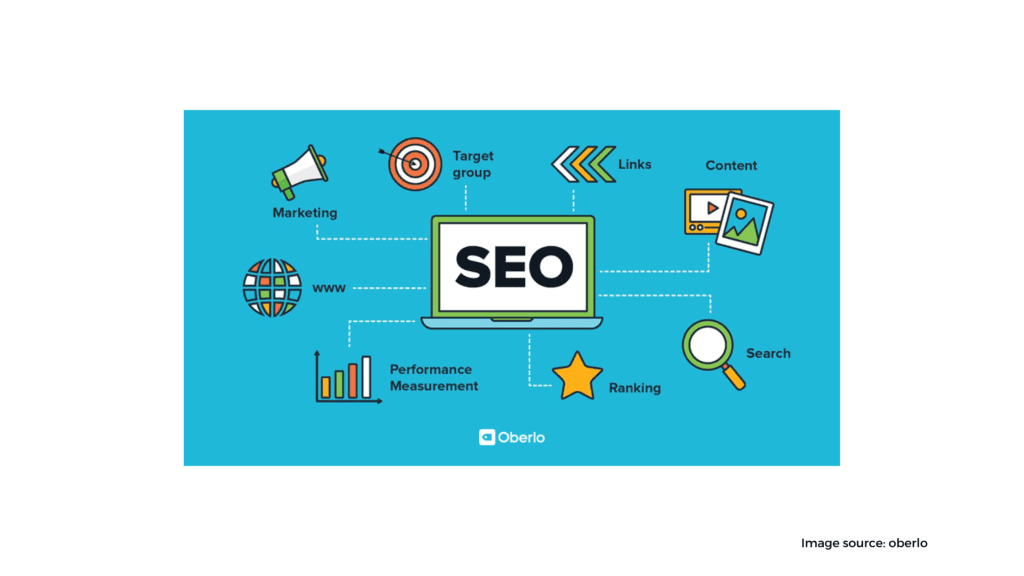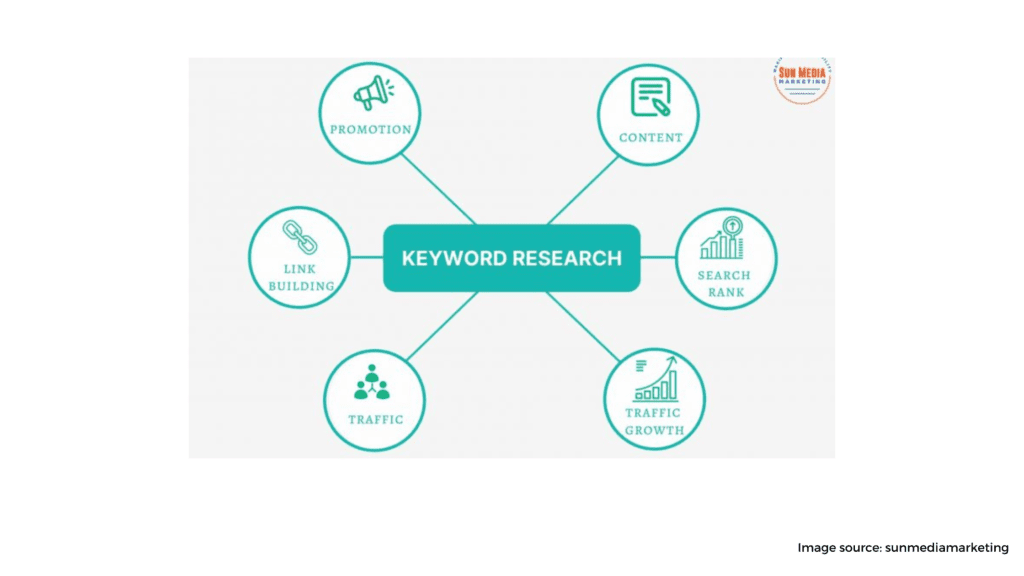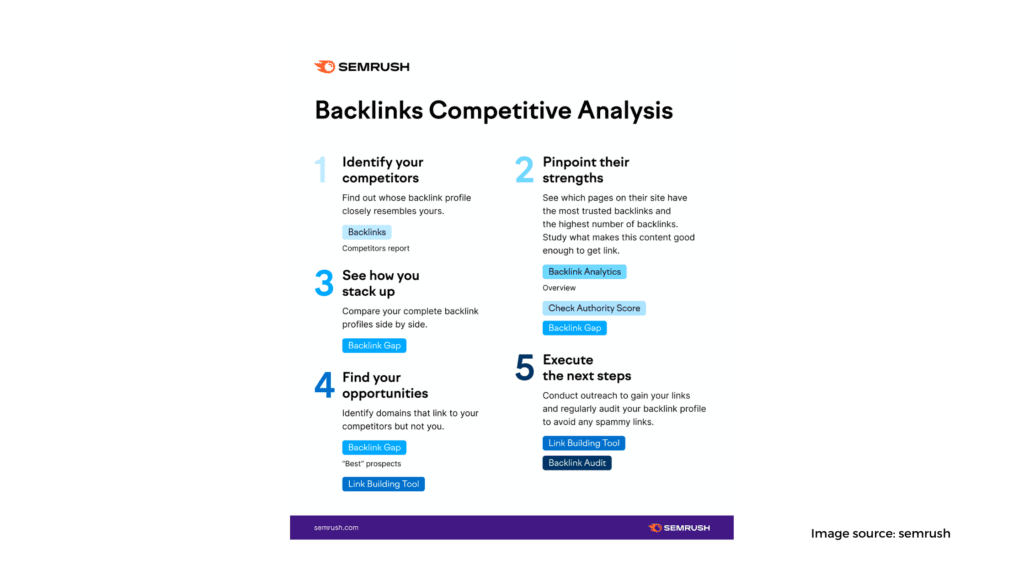Financial professionals are always looking for new ways to attract clients and grow their business. SEO (Search Engine Optimization) is a great way to do this.
Using SEO, investment advisors may achieve a lot of benefits. It’s an effective digital marketing strategy since it may help you outperform other financial planning services in search results. It’s low-cost because it may bring people to your site who would otherwise pay hundreds if they saw the commercials to achieve their financial goals.
What Is SEO?

The aim of SEO is to have a website show in search engine unpaid results. The term “natural,” “organic,” or “earned” traffic is frequently used to describe this method.
In a nutshell, SEO stands for “search engine optimization.” It’s when you try to rank for particular terms in search engines. Since Google is the most popular search engine, a financial institution that wants to use SEO frequently aims to get on its first page.
Every financial advisor depends on SEO as it provides the following benefits:
- Prospective customers who look for relevant keywords can discover you.
- If you want to rank above your competitors, this is definitely the case. It’s crucial — most people don’t bother browsing past the first page of
- Boost your online presence by building your reputation and increasing your visibility.
- Increase your email list and inbound leads.
- Increase your investment management blog readership, if you have one.
After you’ve gotten a basic understanding of SEO’s significance, you’ll be able to see why omitting it from your marketing plan is a huge error.
5 Incredible SEO Tips For Financial Advisors
I could make this essay considerably longer and more involved than it is right now, but I’d rather give you the most essential information about SEO as a financial advisor that you’ll find.
Furthermore, Google’s search algorithm is updated on a regular basis, thus I desired to develop something that would (ideally) outlive the modifications.
Buckle up, because I’m about to give you important pointers that will assist you in growing your business if you use them correctly. There are even some pictures of exactly what to do!
1. Perform Keyword Research

This is the most crucial stage. The lifeblood of search engines are keywords. When looking for a financial advisor, potential customers do the same thing by inputting keywords into their search bar.
Market research is important for any business, but it’s especially crucial for companies that rely on the web.
In my opinion, the following two metrics are the most crucial for keyword analysis: Volume and keyword difficulty.
- The Average Monthly Search Volume report shows you the average number of times a certain term is searched for every month.
- Keyword difficulty is a number between 0 and 1, with 1 being the most difficult.
Here’s an example for you:
Volume and keyword difficulty results for “investment advisor dallas”.
In this case, the most-searched term is “financial advisor Dallas,” with 170 searches per month and a keyword difficulty of 55.68, which means it shouldn’t be too difficult to rank for that keyword.
Keep in mind that keywords with a low keyword difficulty are usually easier to rank for. For example, if I was new to SEO and wanted to aim for 60 or below, that’s the first place I’d start.
Because many SEO specialists consider keyword complexity to be an important ranking signal, it’s unlikely that you’re one. Leave that work to the experts.
It’s critical to get the low-hanging fruit out of the way in order to build some SEO juice. I’m going to show you a keyword for “financial advisor Chicago” in this example, since the term is more difficult to rank for in Chicago than Dallas. As you can see, financial advisor keywords are tougher to rank for in Chicago than Dallas — and it’ll take additional effort if your keyword difficulty rating is higher.
Results for a financial advisor who wants to rank for “financial planners chicago” in terms of volume and difficulty.
2. Create High-Quality Content

Advisors have used the “content is king” concept to an unhealthy degree throughout the last decade, but it’s true: The internet belongs to content, and the objective of a search engine is to organize and distribute relevant material.
You want to incorporate your chosen keywords into your content in order to show the search engine that it’s relevant. However, don’t make your page jam-packed with keywords; this is known as “keyword stuffing,” and search engines can penalize you for it. Instead, concentrate on offering well-written material that incorporates a few natural but strategically positioned keywords.
Write your own material, but if you can’t, don’t be cheap. You may either spend a few dollars per click or $100 to $300 for an excellent piece that will continue to deliver and attract visitors over time. If you want to succeed, you must play the long game.
SEO needs material. The fundamental SEO principle is the use of keywords, and content is a useful way to utilize keywords. Writing relevant, valuable content for real people with genuine value who just so happen to use your keywords is what great content marketing is all about.
I am going to be honest about it, because it works.
3. Build High-Quality Backlinks

Well, it’s back to the old slogan that I’ve been hearing for a while now: “high-quality content.” Everything has to be white hat, or high quality, for search engine updates in the future. Take my word for it: Those who try to game the system are inevitably crushed.
Another SEO principle is obtaining backlinks. Backlinks are links from other websites to your website. They inform search engines that another site believes your material is valuable enough to link to it, indicating authority and allowing you to rank higher.
The quality of your backlink is directly related to how relevant the linking site is. That’s why it’s not a good idea to spam websites and directories with irrelevant links.
In general, search engines prefer natural connections formed over time rather than hundreds of low-quality backlinks. You don’t want to make thousands of low-quality backlinks or purchase them.
The internet has been a wild west since its inception, and scammers have always tried everything to get around it –– from link farms to purchasing other domains, to hidden links. Search engines, on the other hand, are getting smarter every day.
4. Make Your Website Faster

Google has stated that one of the signals utilized by its algorithm to rank pages is site speed. As a result, if your website is sluggish to load, it might have an impact on your rankings. Brand loyalty is essential for success, and people are more likely to be loyal to a brand that provides a good user experience. Online marketing strategies should focus on providing a positive user experience, which can be achieved by having a fast website.
A recent study showed that 40% of internet users will leave a page if it takes longer than 3 seconds to load. If you want to keep your visitors on your site and improve your SEO, you need to make sure your website is loading quickly.
5. Create Click-Worthy Meta Descriptions

A meta description is a short description of a website that appears as a preview in search engines. It’s made up of an HTML tag, which search engines display as a preview.
Meta descriptions are essential since they encourage visitors to click on your material. Financial advisors may enhance their SEO by creating click-worthy meta descriptions, as search engines consider you more worthy of higher ranks if more individuals click on your content.
Here are some pointers on writing better meta descriptions:
- Make them clear and precise. What exactly are you selling? Make sure you’re clear. If you’re aiming for a certain geographic location, make sure to include it.
- Make sure your meta description includes relevant words. When your meta description contains keywords that searchers use, you’re more likely to appear in search results and receive clicks. Google will also make the searched terms stand out even more, using bolding.
Additionally, make certain your descriptions and content match; you don’t want to mislead someone into clicking on your link, since they will click and bounce back swiftly, which is bad for rankings.
The Secret SEO Weapon Financial Advisors Don’t Know They Have
I’m about to share something that will revolutionize the way you “do SEO” and significantly decrease your learning curve. If you’re serious, I recommend that you read this carefully and take action.
This is an awesome way to get links quickly.
Consider what you could learn from your competition’s backlinks. Consider this: You’ve already done the hard work; all you have to do now is look at their links and see whether they’re worth your time.
Replicating your competition’s backlinks takes a lot of the legwork out of SEO and link building. It’s also simple for a novice to do. Here’s how to do it in three easy steps.
Make A List Of The Top Search Results
To begin, type in your chosen term and retrieve the URLs for the top results of a search. Simply conduct a Google search and keep track of each URL that comes up.
In this example, I looked for “financial advisor Chicago” and got these results. (I highlighted the link I investigated!). Checking the top search results for the keyword and selecting the best option.
Check The Competitor Backlinks

I use SEMrush to research competitor backlinks since it’s the simplest tool to use and it provides a lot of data.
Putting one of the search results into SEMrush to get competitor data.
Here’s what I see after I research their backlinks:
I scrolled down to the bottom of the search results page and found a list of backlinks relating to the URL I had chosen. I clicked on the first link just to see what would happen. D3 Financial Counselors were included in a list of top financial advisors in Chicago, as I discovered. It’s fantastic!
Study The Links And Make A Judgment Call
Now, all that’s left is to go through each of the links one at a time.
Keep a running list of everything you do and who you email, and make sure to keep track of it all. I recommend using a CRM like Capsule so that you may see what works and what doesn’t.
Finally, don’t count on this approach. The goal of link building is to surpass your rivals, not just keep up with them.
Even if you manage to acquire every single one of their connections, which is unlikely, you must obtain links from sources that your rivals do not have.
1. Refresh And Consolidate Content
It was simpler to get away with quantity rather than quality in the early days of SEO. Google might reward you with more exposure if you published a blog article on a daily basis, for example, based on the amount of material you produced — but those days are long gone.
Google now values quality, and your website will be penalized if it contains outdated or low-value material. If you fill your financial advisor’s website with blogs that don’t attract visitors or result in appointments, follow Schulte’s example: perform a content cleanup.
Keeping it clean is key. According to Stephen, most bloggers find that if they just take a close look at their site and delete anything that isn’t directed toward their target market or isn’t good, they can free up enough time in the day so they don’t feel like they’re working seven days a week.
With your existing blog material, the next stage is to refresh and combine it. What can you do to make your blog even more useful? Here are some suggestions for how you may enhance your blog:
- Improve the title.
- Embed a podcast episode (like I did above!) or short video.
- Add new media elements.
- Include a table of contents.
- Rewrite some parts of the article with recent information.
Don’t forget to update the dates on your blogs after you’ve optimized them. If you wrote a blog in 2016 and haven’t updated it, Google won’t see the difference, and Google likes to see progress before giving you SEO credit.
Next, you should combine any blogs that would be more effective together than apart. A lot of financial advisors are blind to the fact that you may cannibalize your material by following arbitrary restrictions on how many blogs you should produce and what you should write about.
2. Have Clear Messaging And CTAs
Schulte understands the significance of a successful website, and he’s spent more than $50,000 in the last six years improving it. I’m not suggesting you do this, but you should reconsider your website, especially the homepage; in fact, he claims that’s when you should start.
You can include CTAs after showcasing your services such as, financial planning needs, exchange traded funds, financial life,
Your website’s home page is the first thing potential clients see, so inform them who you are and how you can assist them right away. When you arrive at Schulte’s company website, for example, “Retirement Planning For People Over Age 50,” is the first thing you notice. He then informs you that he can assist with tax reduction, financial expertise, and income optimization.
When your SEO and marketing efforts attract the clients you need, it’s time to expand your company. That’s where your call-to-action comes in handy.
You should have only one clear CTA on your homepage for your desired next step — not three, ten, or even thirty. It’s simply a single task. Whether it’s joining your mailing list, making a call, or downloading a lead magnet, the goal is to make it as simple as possible for visitors and potential clients to do so.
Typically, CTAs on financial advisor websites include things like “see more,” “contact us,” or “make a appointment.” That isn’t very appealing, is it? Those buttons appear on a lot of other websites, so prospects are unlikely to pay attention to them.
In one fell swoop, you can improve your CTA and eliminate customers who aren’t interested in doing business with you. It’s a win-win situation.
3. Tailor Your Website And Add Descriptions
Your website needs proper titling and descriptions on the backend.
You’ll also want to give your website a name and describe it — this way, search engines will know who you are, what you do, and when to display your website to people that search for the keywords you rank for.
We previously discussed meta descriptions, so let’s look at other strategies you may use to connect your online presence with search engines.
There are two ways you can do this:
- Website title. The name you give your website should include your company name as well as what you do. The phrase “Defined Financial – Certified Financial Planner in San Diego” appears on Schulte’s Webpage, which increases site traffic through a popular search term.
- Page descriptions. Each page on your site should have a description. Try the free Yoast SEO WordPress plug-in, which you can add to the backend of your website, for this step. You’ll know exactly how to add titles and descriptions to your web pages with this tool, as well as how to boost engagement and SEO optimization.
It’s not the end of the world if WordPress doesn’t host your website. Website builders like Wix or Squarespace make it simple to modify titles and descriptions frequently.
BONUS TIP: Get Active On Social Media
Inbound marketing for financial advisors isn’t complete without a social media presence. Why? It’s where your potential clients are spending time.
Even in the financial services sector, having a vague social media presence might harm your brand and put you at a disadvantage.
Because correlation does not equal causation, I didn’t include this as one of the suggestions. The idea is that content shared a lot on social media is perceived to be more valuable by search engines. However, Google has repeatedly denied using social media signals for SEO ranking purposes. Furthermore, social networking sites employ nofollow links, which provide zero link juice.
Viral marketing refers to the creation and sharing of content on social media with the goal of getting users to take a desired action. This could be anything from visiting your website to making a purchase.
You can use a number of growth hacking techniques to increase traffic to your website. Schulte applied a simple but effective strategy: He reached out to popular bloggers in his industry and asked if they would be willing to write about him.
In any case, you should encourage sharing and organic traffic by posting high-quality information on social media.






